Photographing children is one of the more challenging topics in learning photography. But you're in luck. Children are one of my favourite subjects to photograph, and so I have a lot of experience. Thatís why Iíd love to share...

Photographing children is one of the more challenging topics in learning photography. But youíre in luck. Children are one of my favourite subjects to photograph, and so I have a lot of experience. Thatís why Iíd love to share a few tips with you and help you on your way in photographing the life of your kids and grandkids.
But first, let me tell you this. You are in a unique position as a grandparent. Iím sure your child, the parent of your grandkids, loves to photograph his or her kids. But you know what? Parents love to be IN the picture as well.
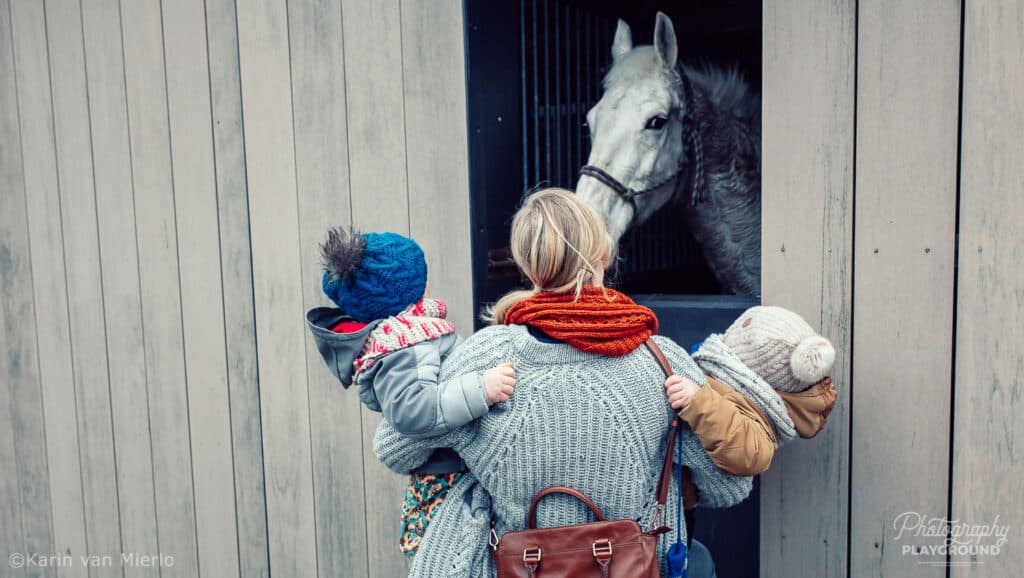
Thatís the main motivation for people to ask me for a family session. So that years from now they have a document of what normal life looked like.
How the parents and kids interacted and what they used to do on a regular day. What the house the kids grew up in looked like, how they spent their Saturday afternoons, and what their favourite books, toys, and games were.
These types of candid moments are so valuable. Iíd say theyíre more valuable than the posed portraits we tend to make of our (grand)kids.
A Precious Gift
This is why Iíd like you to grasp the importance and uniqueness of your position as a grandparent. Consider it your precious gift to your family.
Because you are a familiar face, they already feel comfortable around you. This is something I have to work on as a photographer who is not part of the family. It takes a little while for them to forget the camera and start to act naturally.
And you are in the position of being able to photograph the connection between ALL the family members.
So, are you ready for some super helpful tips for photographing your kids and grandkids?
#1 Be Prepared
When you are ready and prepared, the process will go a lot smoother. The thing about this type of photography is, you never know when a great photo opportunity comes along.
And itís really disappointing when youíre photographing and, all of a sudden, your memory card is full or your battery has run out or youíre fumbling with your camera settings.
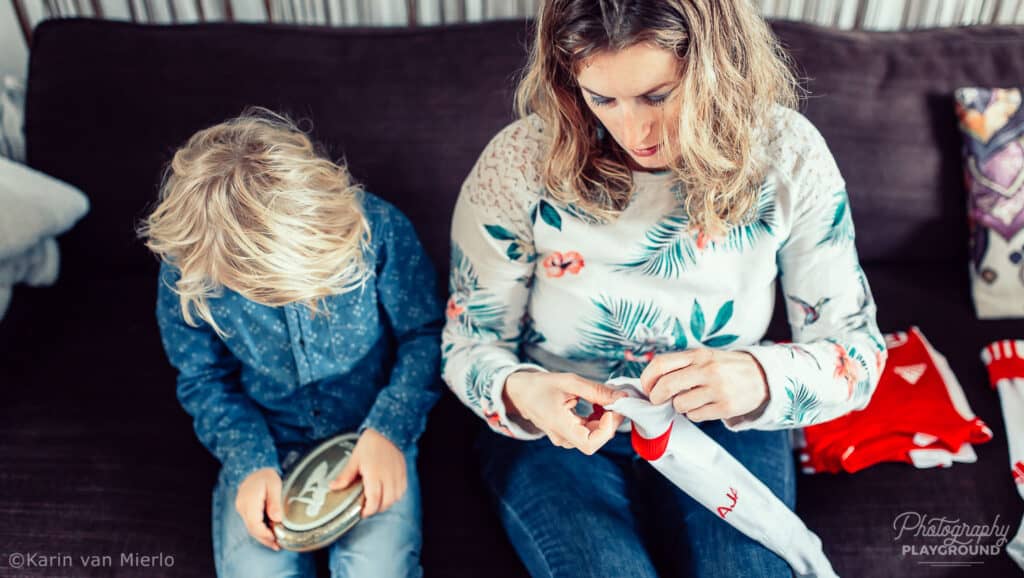
So first, make sure you have an empty memory card and a full battery in your camera. Ideally, you have a spare for both of them.
Secondly, shoot in the raw file format. This is an option you can preselect in your camera menu. Why is this important?
Because a raw file is like raw dough. You can bake a lot of different things from it (read make different edits).
Whereas a Jpeg file is a roll, or a croissant, or a loaf of bread. It has already been in the oven (read edited in your camera).
If you shoot in raw, you have more leeway in your exposure. If a raw file is overexposed, you can still Ďsaveí it. An overexposed jpeg file is lost. And thatís very good news when youíre photographing situations that evolve quickly.
And thirdly, donít be afraid to crank up your iso value. This is also something you can select before you start photographing.
The iso value determines the light sensitivity of the sensor. The higher the value the more sensitive your sensor becomes to the light.
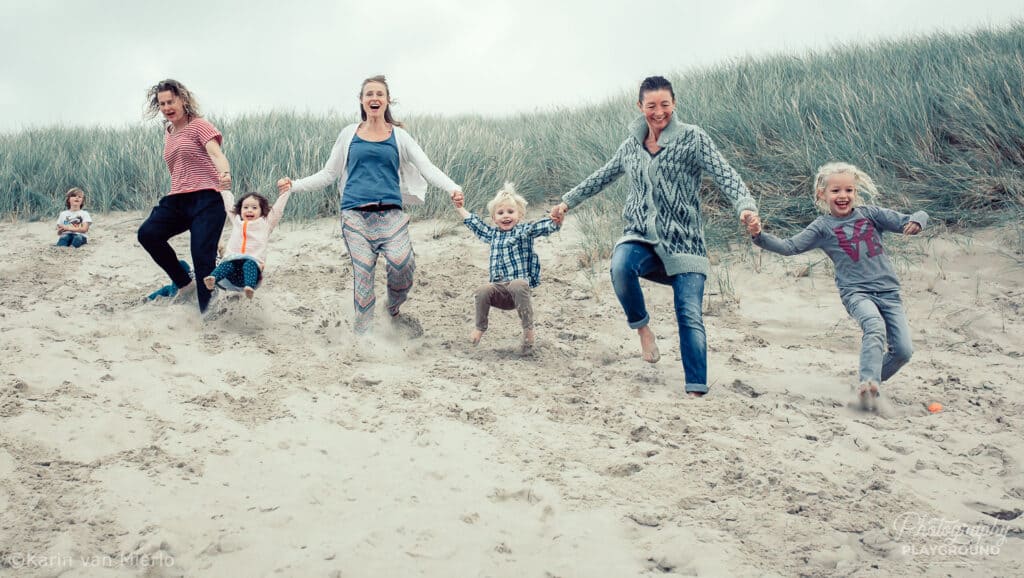
This is important because, as you know, children move around a lot. Theyíre quick. And to keep your pics super sharp when your subject is moving, you need a fast shutter speed. The fast shutter speed freezes your moving grandkids giving you nice crisp pictures. And the high iso value evens out the fast shutter speed.
How fast, I hear you asking? Well, at least 1/250 of a second. Anything above that number will be fine as well.
Download the free Starter Photography Playbook if youíre not sure how to select those settings. Itís a step-by-step guide on how to photograph in Program Mode. Plus, it has some fun projects to practice your skills, so you are prepared for real-life situations.
#2 Make Use of the Available Light
What do I mean by that? Available light is the light that is already out there without adding light from your camera flash.
This is important because nothing kills a genuine moment better than the light of a flash. And having a flash go off in their face is also annoying for the people youíre photographing.
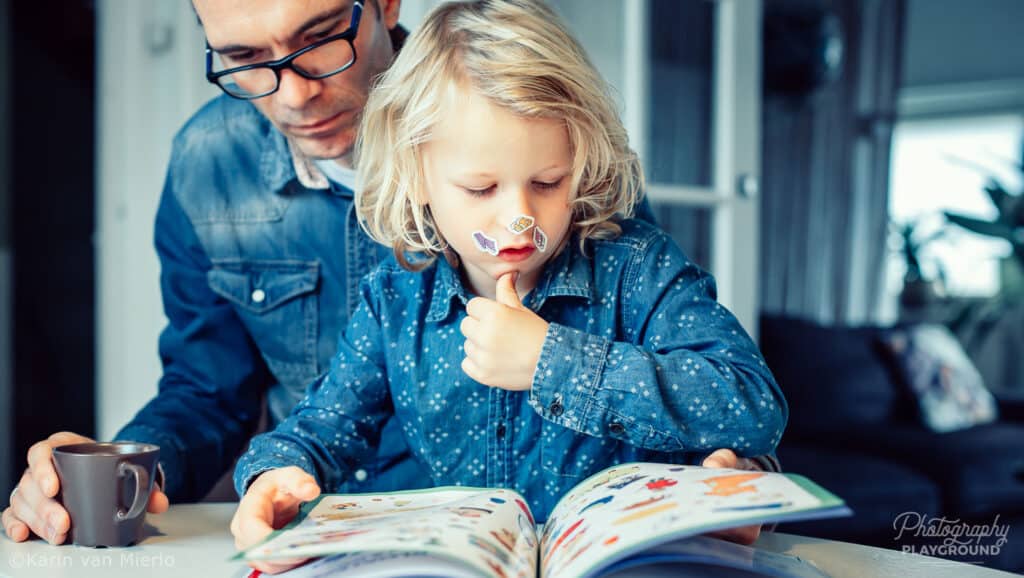
So, where to find beautiful available light? Obviously, natural light is your best friend. Whether itís outside or inside the house.
But when itís evening, there are a lot of options as well. The light from a lamp, or a computer screen, or the open door of the fridge. There are still plenty of photo opportunities when the sun has gone down. The thing is to open yourself up for the less obvious light sources. Once you do, youíll see them all around you.
In low light situations like this, it becomes even more important to select a higher iso, so you end up with a well-exposed photo.
#3 Get Down to Their Level
Photographing children from your regular adult point of view makes them look smaller. Thatís why itís important to get down to their level. So get down on your knees and photograph your grandkids at their eye level.
Getting down to the level your subjects find themselves in also makes you more involved in what theyíre doing. You stop being an outsider and become part of the situation. Thatís when the magic actually happens.

There is no rule in photography that says you need to be detached to make a good photograph. I know many people believe that being Ďthe fly on the wallí is the right approach to candid photography. Iím not one of them.
On the contrary, actually. Being involved and becoming part of the scene youíre photographing will lead to more compelling and emotionally driven pictures.
And while youíre at it, try walking around and discover new angles to photograph a familiar situation.
#4 Focus on Interaction and Connection
Of course, you can photograph every little aspect of your childrenís and grandchildrenís life.
But Iíd suggest you focus on the aspects of their life your son or daughter cannot photograph themselves. And thatís the interaction and connection between the family members.
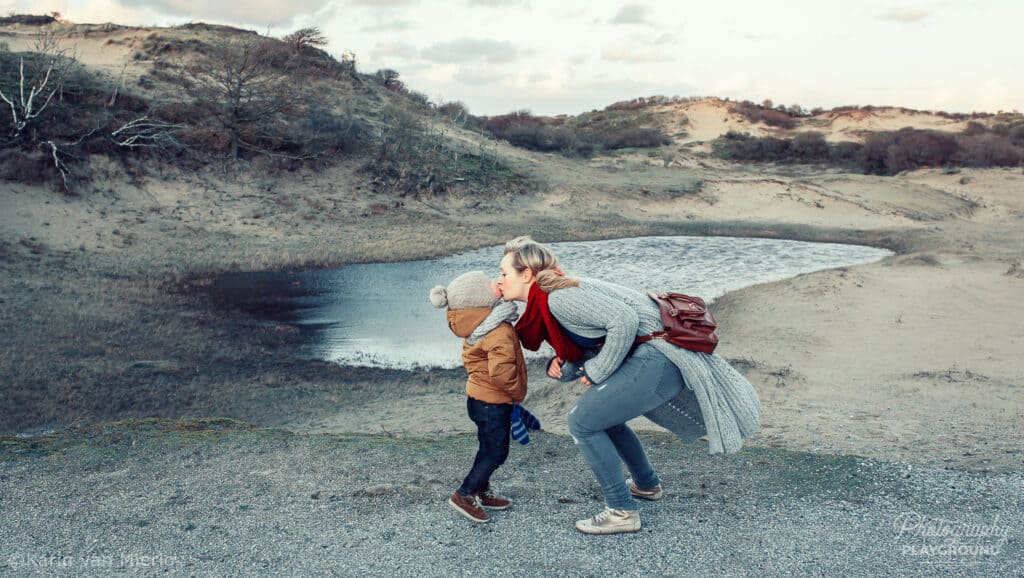
Think back to when you were raising your kids. How precious would it have been if you had photos of you reading a bedtime story, building sandcastles together, watching your sonís soccer game with the entire family, helping your daughter with homework, baking cookies together, practising the piano, or walking to school? Not only for you but for your children as well.
Make use of this special, unique and valuable position you have in your familyís life. Document it for them and for yourself.
#5 Go with the Flow
In this type of photography, itís important to let the situation unfold and not interfere.
I know thatís not always easy. Because one of the things you have little control over is how your subjects will react to the camera. This can range from rehearsed looks, fake smiles, to turning away.
I know one thing for sure after years of photographing children. Asking them to act naturally makes them even more self-conscious and is not the way to go.

The best way to deal with this is to ease into the process. Just have your camera close by and interact first. Then, by the time theyíve forgotten about your camera, you start to make a few photos. This makes for a transition your subjects will hardly notice.
Sometimes itís tempting to ask your subjects to do something funny or cute or epic again because youíve missed the moment. Try to steer clear from that.
Because chances are theyíll do it again. The best approach is to have patience and anticipate the moment they do.
To sum it up, photograph whatever is happening, go with the flow, let life unfold, embrace the mess and most of all, have fun together.
Donít forget to download the free Starter Photography Playbook to better understand your camera settings and practice your skills on inanimate subjects. Because you donít want to miss those once in a lifetime moments!
Letís Have a Conversation:
Have you tried photographing your grandchildren? How often do they remain in the pose you asked them to? Do you have photo treasures of your kids and grandkids that you just love looking at?


